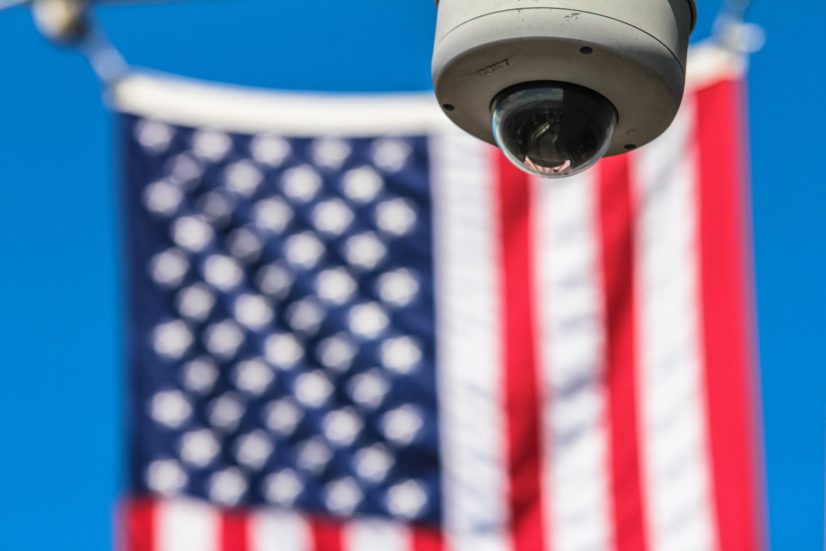Although some might be uncomfortable with the general idea of video surveillance, the technology has allowed for a level of transparency that has promoted a more just society.
Video recordings of altercations or emergencies have taken the guesswork out of addressing these situations: We don’t have to “take someone’s word for it” when an incident has been captured on video.
Because of the transparency they provide, surveillance cameras in schools are popular. According to a student survey from the National Center for Education Statistics, 86 percent of middle school and high school students have security cameras installed in their schools.
So you might ask yourself, is it illegal to have cameras in classrooms?
While security cameras in schools are common, there are limits to how this technology can be used. Security cameras are allowed in a typical school setting, but their use is governed by regulations.
Legal Concerns for Surveillance Cameras in Schools
First, it's important to know that states have varying laws with regard to surveillance on school grounds. Therefore, it's critical to review and follow state laws when setting up or changing a security camera system.
In general, U.S. laws allow for the use of video cameras to monitor areas where privacy is an unreasonable expectation, such as hallways or outdoor courtyards. This is a good rule of thumb to follow when considering the installation of a security camera.
Delaware, Maine, New Hampshire, South Dakota and a few other states have strict laws regarding hidden video surveillance. Therefore, security cameras in schools and classrooms should be visible.
Some cameras are capable of recording audio, and federal laws forbid the audio recording of persons without at least one individual’s consent. If installed security cameras are capable of recording or audio, steps should be taken to ensure audio capabilities have been switched off.
In some situations, audio recording may be permitted so long as signage alerting people to audio recording is plainly visible. Schools looking to record audio with their video cameras should consult with local law enforcement and government officials to determine what is legally allowed.
If surveillance cameras in schools are plainly visible and record only video of areas where privacy is an unreasonable expectation, no signage is needed.
Where You Can Install Security Cameras in Schools
Before shopping around for a system, it’s important to know where it can be installed. Cameras are most effective in indoor common areas like auditoriums, cafeterias, hallways and gymnasiums. Recording in these areas increases visibility for school faculty, allowing them to quickly respond to altercations or emergencies.
- Security cameras in common areas can also be a strong deterrent. People are less likely to do something improper if they know their actions are being recorded. In a school setting, this can have a significant chilling effect on bullying, harassment and assault. Security cameras can also deter and prevent false accusations from being taken seriously.
- Security cameras can also be placed in classrooms. Students in a classroom under video surveillance are less likely to cheat or misbehave when an instructor isn't focused on the class. In this situation, a school can increase invisibility and protect from liability in a way that is unobtrusive.
- School security cameras around the perimeter of a campus can potentially avoid active shooter situations. Some modern school surveillance systems are capable of identifying trespassers in real-time. This cutting-edge technology allows faculty and law enforcement to respond quickly, if necessary.
- When placed in a parking lot, school security cameras can protect students and vehicles. Arrival and dismissal times can be particularly hectic in a school parking lot. Some school surveillance systems offer features like license plate recognition, which allow administrators to be notified in the event that an unauthorized vehicle enters the school parking lot.
It's also important to note where surveillance cameras in schools are not allowed. Cameras cannot be placed in locker rooms, restrooms, changing areas and other areas where privacy is expected. Some state laws regarding security cameras in schools forbid the use of surveillance in faculty lounges and break rooms. These laws are particularly relevant for break rooms that are designed to provide individual privacy.
Installing Video Surveillance to Help Indiana Schools Stay Safe
Schools looking to install or upgrade a camera system should know that these systems are more affordable than ever. In the mid-2000s, high-definition security cameras could be cost prohibitive for some schools, but current cloud-based video surveillance technology is likely to be more cost efficient. Furthermore, some schools may be able to fund a security camera system through government grants.
School surveillance systems function best when they are backed up by strong IT support and technology. Surveillance cameras in schools require a good network that minimizes signal lag. School security cameras that are combined with alarms, door sensors or other internet-connected technology also require a strong network. Likewise, school surveillance systems should be backed by robust support from a security provider.
At Taylored Systems, we have more than three decades of experience in keeping schools safe. To learn more about how our school surveillance systems and support can keep students safe, please contact us today.

